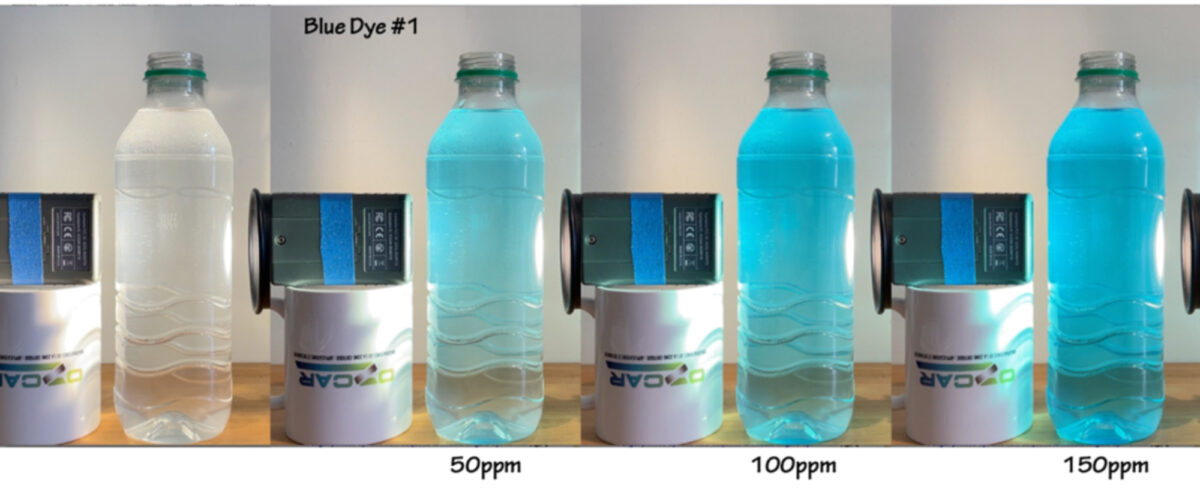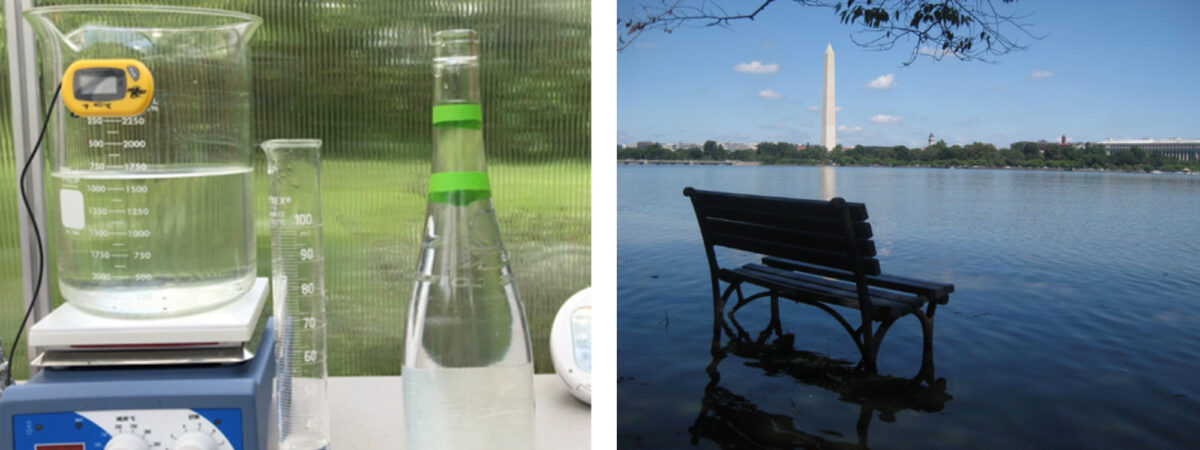Students will design and test a closed system that will pull CO₂ levels down below pre-industrial atmospheric concentrations (that is, below 280 ppm). The objective is to design a tank where the rate of photosynthesis exceeds that of respiration so that CO₂ levels decrease on average over time.
PPM: The Impact of Trace Elements in the Environment
The environmental consequences of tiny quantities can be huge. In this activity we use dye and water to show how big a tiny change can be. Students sequentially add drops of food coloring to one liter of water to assess the change caused by a trace component. The changes can be described qualitatively, or, quantified with photographs or a light meter.
Thermal Expansion of Water
In this activity we calculate the coefficient of thermal expansion for tap water. Students will heat water in a long-necked glass bottle to explore the relationship between temperature and volume of water. Quantifying the initial volume, change in volume, and the initial and final temperatures allows students to calculate the coefficient of thermal expansion.





